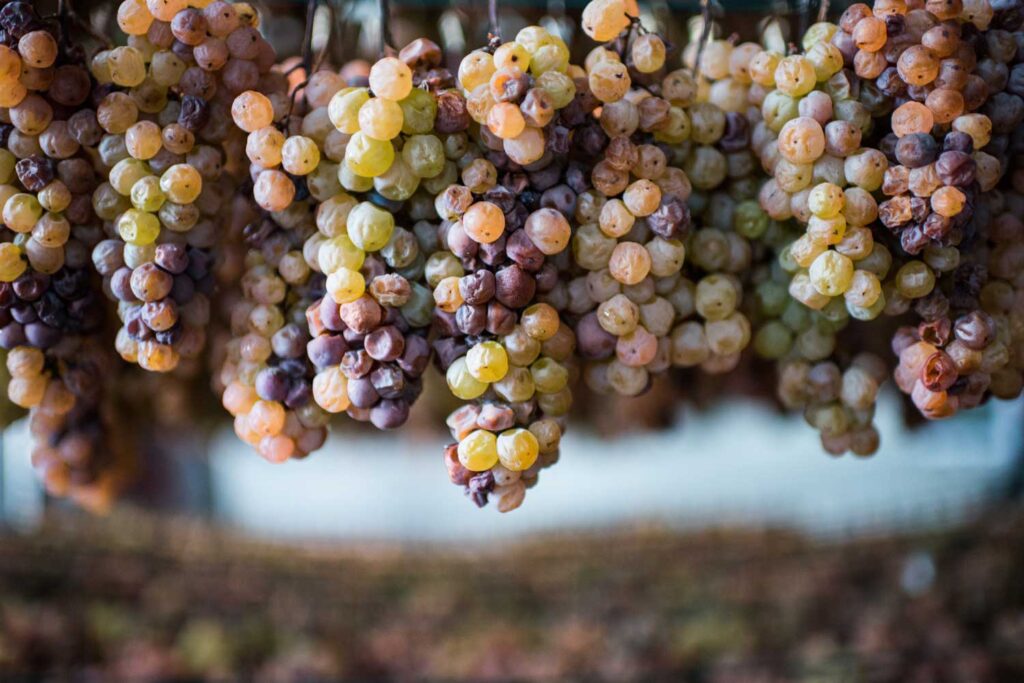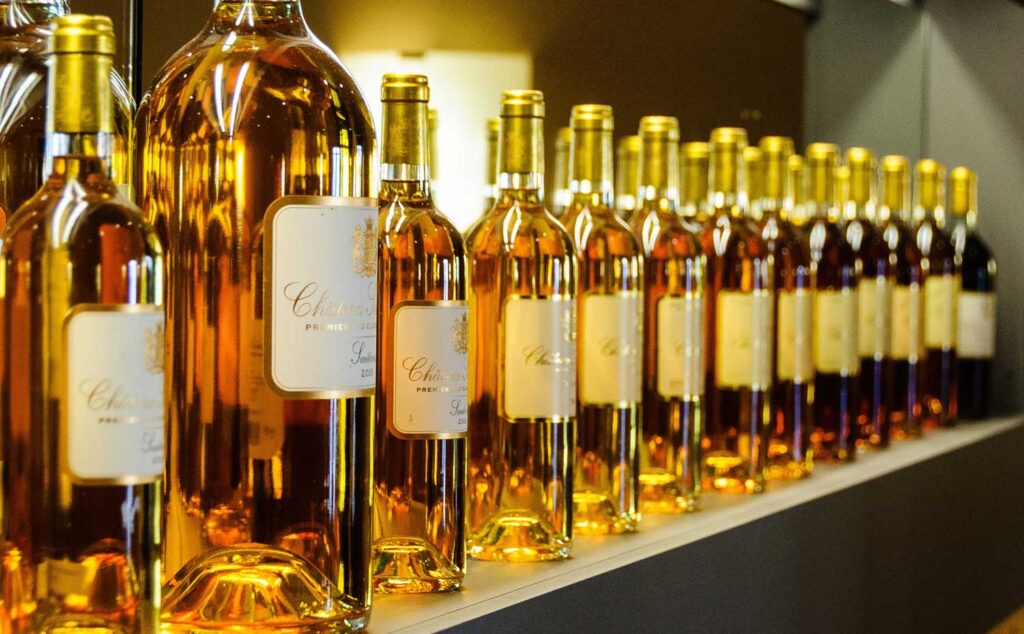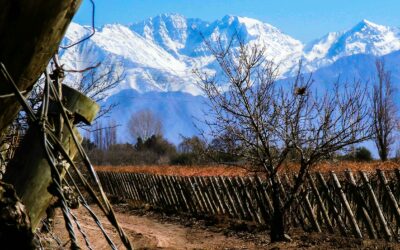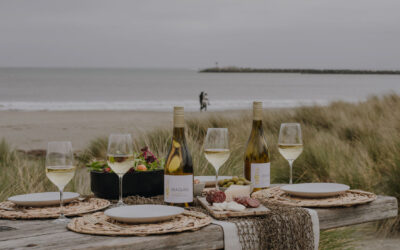Despite sounding like the beginning of a Shakespearean soliloquy, I’m actually delving into the world of sweet wines. More precisely, the important presence of noble rot; Botrytis cinerea in Latin or simply botrytis for short.
What is Botrytis/Noble Rot?
Botrytis is a particular type of rot that occurs naturally under certain conditions. A warm climate and the close proximity of water creates mists that hang about the vineyards through the mornings. This damp, humid atmosphere encourages the growth of this unique mould. What stops it turning into the destructive grey rot is the evaporation of the moisture through the afternoon and evening.
Rather than tainting the flavour of the grapes, botrytis sucks out some of the water element. In turn, the sugars and acids concentrate under the shrivelling brown skins.

How are the Grapes Harvested?
The best producers will hand-pick these sticky, raisined grapes, on more than one passing through the vineyard. Harvesting can involve as many as eight or nine separate picks over a six to eight week period. This ensures that as many grapes as possible reach their optimum degree of ‘rot’ as ripening times vary. Even within the same bunch of grapes.
With production levels uneconomically low, this is an extremely high-risk and expensive way of producing wine. This goes some way towards explaining the high price tag compared with equivalent ranking dry wines.
The result in the bottle can be nothing short of exhilarating. It certainly helps if you have a sweet tooth and can cope with the wine’s rich texture and intense sweetness!
The Holy Trinity of Botrytised Wines
Arguably the best pudding wines can be found in Tokaji (Hungary), Sauternes (Bordeaux) and the Rheingau (Germany).
Tokaji
Tokaji, or Tokay (the English translation) is a region that spans northeast Hungary and southeast Slovakia. It’s home to the first wine to be made using botrytised grapes over 400 years ago. It has certainly stood the test of time and is a favourite among top wine merchants and restaurants worldwide.
The three main vine varieties that constitute Tokaji are Furmint, Hárslevelü and Yellow Muscat (aka Muscat Blanc à Petits Grains). All are planted close to the rivers Bodrog and Tisza, which help create the ideal conditions for botrytis to thrive.
The wines come in various grades of sweetness, measured in puttonyos or putts for short.
A puttony was a 25kg bucket that was filled with crushed nobly rotted grapes, known as Aszú. This was added to the barrel of dry fermented wine to start a secondary fermentation. Nowadays, the term refers to an equivalent amount of residual sugar.
The higher the putts level, the sweeter the wine. Up until 2014, Tokaji’s sweet wines ranged from 3 to 6 putts. However since then, both 3 and 4 putt levels were abolished by Hungary’s Tokaji trade council. These have been superseded with the term ‘late harvest’ or ‘szamorodni’.

Aszú Eszencia is made purely from noble rotted grapes and is the rarest, sweetest and therefore most expensive expression available. It has the ability to age for decades. Only the best Sauternes from the best vintages and the finest trockenbeerenauslesen from Germany can match this Hungarian nectar.
Sauternes
Sauternes lies within the Graves district of Bordeaux to the southeast of the city. Nestled between the Garonne and Ciron rivers, there are five communes that make up the region. Barsac is the only one allowed to choose between its own AC or the broader Sauternes appellation.
The famous 1855 classification of Bordeaux’ best châteaux included the cream of Sauternes and Barsac too. It identified no less than 9 First Growths (vs just 4 for red Bordeaux) and 11 Second Growths. Additionally, the special designation of ‘Superior First Growth’ was created solely for Château d’Yquem. Recognition for this extraordinary estate, singling it out from every other Bordeaux wine producer.
Sémillon, Sauvignon Blanc and Muscadelle, in that order of importance, are the three permitted grape varieties. Sémillon is especially susceptible to botrytis while Sauvignon adds acidity and Muscadelle, perfume.

Rheingau
The first late harvest wine made from nobly rotted grapes in Germany came from the Rheingau region. The historic Schloss Johannisberg estate made the ‘accidental’ discovery in the mid 1770’s. It sparked a new wine style that has been revered and replicated here, and in other German regions ever since.
So what makes this small region so special? The simple answer is geography.
We’re talking about a mere 18 mile east/west stretch of the River Rhine between Wiesbaden and Bingen-am-Rhein. The Taunus mountain range on the north bank of the river provides the perfect south-facing slopes for viticulture.
The vineyards mostly run vertically with the gradient, while the steepest sections are terraced and run obliquely. With maximum exposure to the sun, the grapes have no trouble ripening. There’s a wide variety of soil types across the valley too which highlight the distinction between each ‘Lage’, or ‘vineyard’.
Riesling is king in the Rheingau. Proportionately, at nearly 80%, there’s a higher concentration of this variety than in any other German wine region. The wines here tend to be fuller, richer and more exotic in flavour than elsewhere. The sweetest wines can evolve almost indefinitely when cellared properly.
Other Notable Noble Rot Wines
From Bordeaux
I’ve already referenced the village of Barsac which has some excellent properties. These include the likes of Châteaux Climens, Coutet and Doisy-Védrines. The style here is a little more delicate and refined, when compared with Sauternes, but there’s still great intensity.
If you want to bag a bargain, look out for St Croix du Mont and Loupiac. Both lie on the opposite side of the river Garonne and deliver lighter versions at a fraction of the price.
Sémillon is the common denominator that links all of these wines.
From Loire
In the central vineyards of the Loire Valley, you’ll find Vouvray, Coteaux du Layon, Bonnezeaux and Quarts-de-Chaume (Loire’s only Grand Cru). All are exemplars of much more florally-scented sweet wines from the Chenin Blanc variety.
From Alsace
Heading east into Alsace, it’s the late harvest Rieslings, Gewurztraminers and Pinot Gris’ that provide the wow-factor. These are classified as Vendange Tardive or Selection de Grains Nobles.

From Germany
German labelling can be challenging so for the best sweet wines, look for the terms Auslese, Beerenauslese (Ba) or Trockenbeerenauslese (Tba) . Expect to pay a hefty whack for the best but the reward you get in return is totally worth it. Especially if you research your producer and vintage before parting with your cash.
All three styles are affected to varying degrees by noble rot. Auslese being the lowest concentration and Tba the highest. Like the putts system in Tokaji, these correlate directly to the minimum level of residual sugar in the final wine.
The real beauty of these wines is their naturally lower alcohol levels, generally ranging between 6.5-10.5% abv. There’s absolutely no risk of their powerful and complex flavours being masked by alcohol. I’ve witnessed the great Ernie Loosen declare on several occasions, “you can drink yourself sober with these wines!”.
Other countries to look out for in terms of botrytis-affected wines are Austria (with similar classifications to Germany), Australia, Chile, Italy, New Zealand, South Africa and the US.
The Best Way to Enjoy Them
This is always an entirely subjective thing but here are some ideas to help get you started.
The general rule when matching sweet with sweet is not to let the food outdo the wine. So, for example, you might pair a German auslese with a baked fruit tart, like an apple strudel. A rich, 6 putts Tokaji works with an equally rich, dark chocolate cake with marmalade.
Equally you could go the other way and put the wines against savoury or even spicy, fragrant dishes. Thai or Szechuan food and sweet Riesling or Gewurztraminer works brilliantly, as does a rich pâté with Sémillon or Tokaji.
Cheeses, especially creamy blues, work beautifully with the Loire Chenins. I can still clearly recall a lightbulb moment when I tasted an exceptional Coteaux du Layon with a creamy Roquefort!
The one overarching piece of advice I would give is not to serve these wines too chilled. To appreciate the full spectrum of flavours in these spectacular wines, treat them as you would a fine dry white. That is about halfway between fridge and room temperature.




